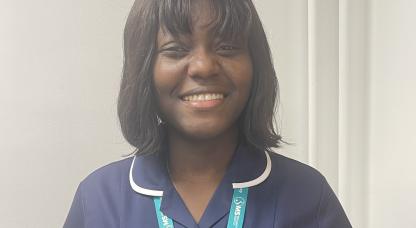In these uncertain times, health professionals are having to come up with new and innovative ways to support people with MS. Here, Tania Burge writes about how she's been delivering physio to her patients virtually and what's she learnt from this new way of working.
Well Covid-19 has certainly changed how we deliver MS physiotherapy services and interact with people with multiple sclerosis (PwMS). In our NHS Trust we have now moved into the restoration phase of our service having been previously been deployed to the wards. This has given us an opportunity to explore new ways of working to meet the needs of our patients, and, prompted me write about the positives we have found during this time from our experience.
We are currently unable to see patients routinely for their face to face appointments in our outpatient clinic. This has provided a surge of opportunities and support in my NHS Trust to provide IT equipment and technology to enable video calls (V/C) to patients. Telemedicine has been a word we have read in research papers and isolated/rural areas but not previously available to me in a large city NHS Trust. I am keen to learn the advantages of and barriers to delivering services this way. I’m also optimistic we can keep this approach and the technology in place after the present crisis to assist our management of patients that find it difficult to get into clinic due to problems with transport or assistance.
Attend anywhere is our NHS Video call of choice. Although the technology can be quite daunting, once you are used to the set-up procedures it becomes a ‘new normal’ for contacting/seeing patients.
To set up the video call we give details prior to the appointment asking where possible to allow the web cams to show the persons whole body and have space to move so that we can assess them and make a treatment plan to assist the management of their MS. We find family members have become great camera people.
The initial subjective assessment remains the same as the traditional face to face assessment, however we do get useful insight into the patient’s surrounds, from their space to move, what their stairs may look like and any tripping hazards such as rugs or dogs!
We have found that although we cannot objectively assess patient’s power or tone with a hands-on approach we are now trying different ways via V/C, for example if patient mobility allows, we have found the Five Sit to Stand Test (FSST) can be beneficial to see how repeated movement demonstrates any fatiguing lower limb function, ataxia or asymmetry of movement. We can also email patients the ‘ABC Balance confidence scale’ which is a subjective review of balance via 16 questions. Both these outcome measure provide a baseline we can use for our intervention and develop treatment plans.
We have also looked at several options available to us for treatment using telemedicine:
Giraffe healthcare is a programme of video exercises with diary functions and chat section. This was developed by Glasgow University. It has been made available to all physios during the time of Covid-19 to allow delivery of home exercise plans. Normally there is a monthly charge but it is available until 16th July free of charge. The Giraffe team have been very supportive in how we set up the technology and any issues are promptly resolved. Patients have found this beneficial. They can either view their exercises on a laptop or download an app on their phone. Any exercises that are not available the Giraffe team have filmed extra to demonstrate ones we have used with our patients as the routine delivery of MS physiotherapy.
By using the combinations of V/C and prescribed exercises we aim to reduce the complications of deconditioning and provide interventions to manage MS. In due course we aim to write a formal review of our experiences with assessment and treatment planning using telemedicine.



